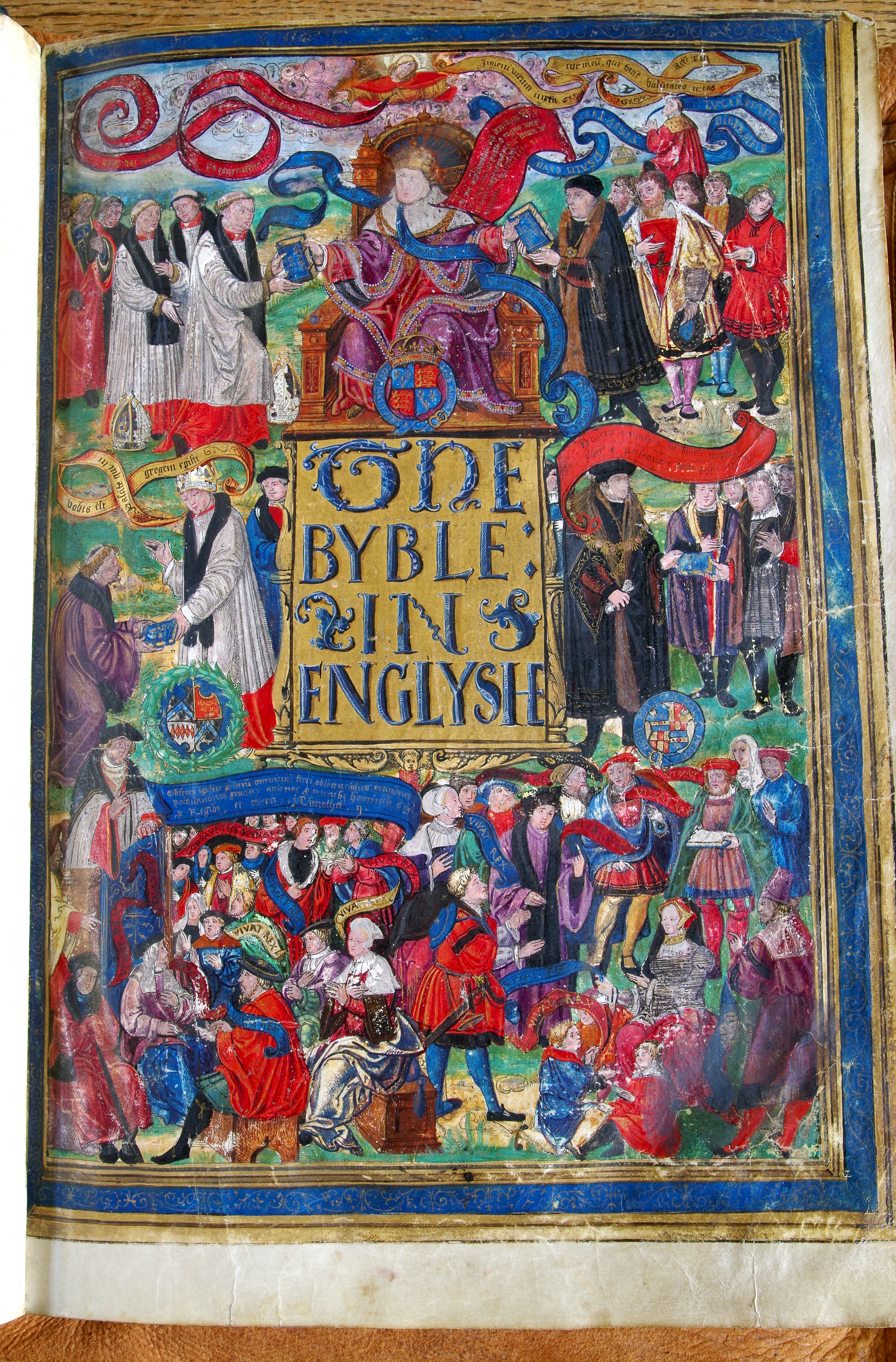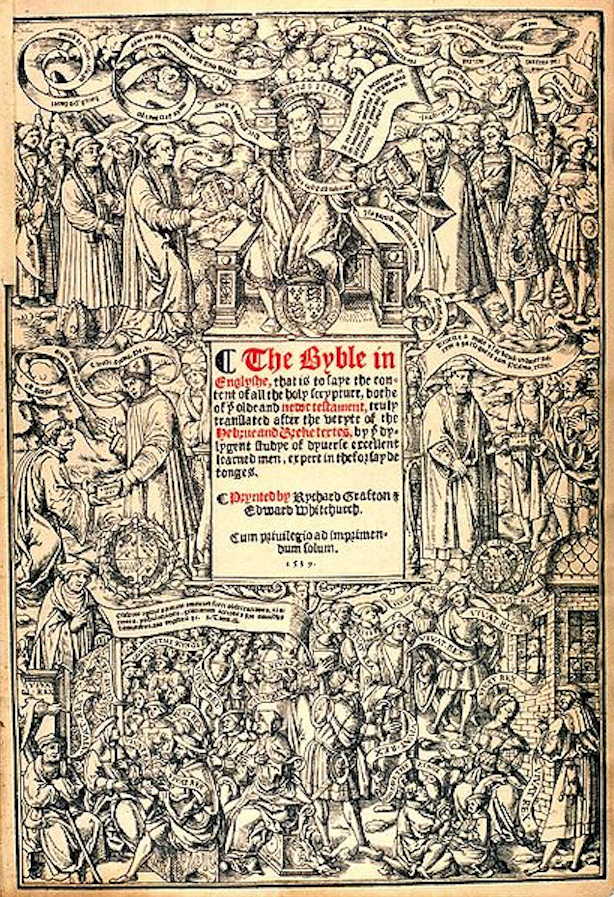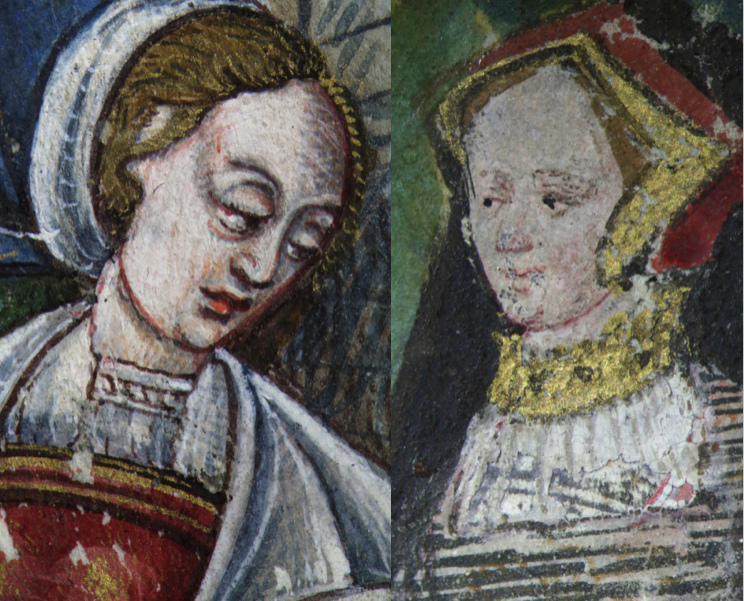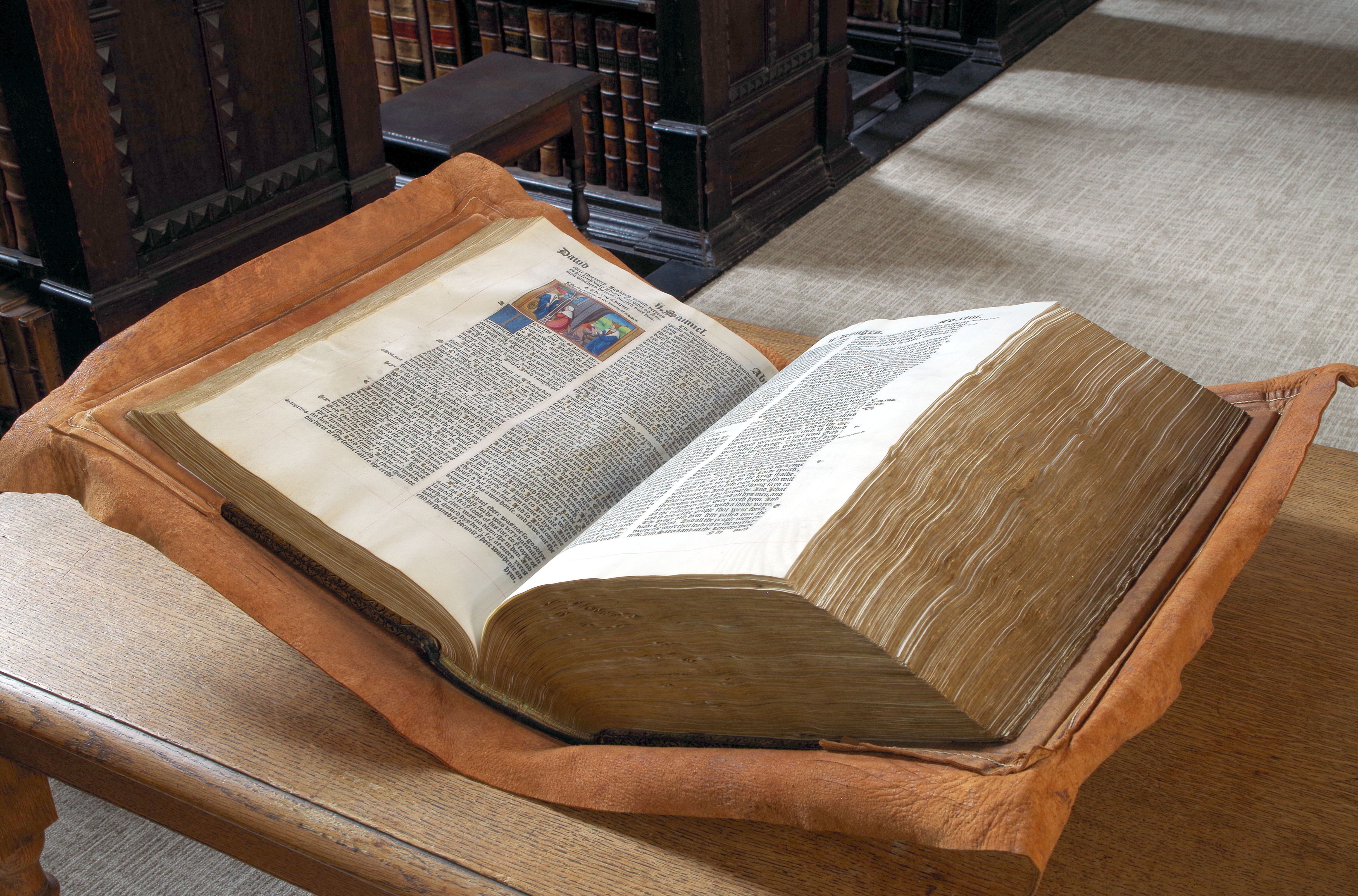Cromwell's 'final' portrait discovered in Henry VIII Bible reveals bid to influence the King
"I’ve looked at the St John’s Great Bible title page very many times and I had no idea that those faces were pasted on later"
Illustrations in a Tudor Bible were changed in the 16th century to win Henry VIII’s approval and boost the position of Thomas Cromwell, his right-hand man, according to new research.
A copy of the Great Bible of 1539 from St John’s College, University of Cambridge, was analysed by a historian and a heritage scientist whose findings shed new light on Cromwell’s political manoeuvrings and unearthed his last known portrait before his execution.
They discovered several Tudor-era alterations to the Bible. Cromwell’s portrait had been glued on to one illustration, while in another his image was replaced by a different royal adviser. A portrait of Jane Seymour, Henry’s beloved third wife, was also added to the Bible.

Cromwell’s copy of the Bible has been in the historic library of St John’s College since the 17th century
The English Reformation started during the reign of Henry VIII when he established the Church of England in a major political, economic and religious split from the Catholic Church. It began because he wanted to divorce his first wife, Catherine of Aragon, so he could marry Anne Boleyn and the Pope refused to grant him a divorce. The break with Rome was seen as an opportunity for some in court to push forward reformed ideas, such as presenting lay men and women with an English Bible.
The Great Bible, so called because of its size, was the first national Bible. The project was masterminded by Cromwell who ordered every parish in England to buy a copy of the printed Bible so it could be read aloud in English during church services. Two lavish copies were made – one for Henry and one for Cromwell himself. Henry and Cromwell’s personal copies were printed on parchment and their illustrations were coloured by hand.
Cromwell’s copy has been in the historic library of St John’s College since the 17th century, but its secrets have only now been uncovered by historian Dr Eyal Poleg and Senior Research Scientist Dr Paola Ricciardi.
Dr Ricciardi, who is based at the University of Cambridge’s Fitzwilliam Museum, used an x-ray spectrometer and digital microscope to gain the remarkable scientific insights and Dr Poleg, Senior Lecturer in Material History at Queen Mary University of London, studied the findings in historical context.
The faces of the men receiving and giving Bibles were painted on separate pieces of vellum and expertly pasted over the original printed portraits
The iconic title page of the Great Bible is often seen as the emblem of the English Reformation. It shows Henry handing copies of the Bible to Cromwell and to Thomas Cranmer, the Archbishop of Canterbury. Cranmer and a man long assumed to be Cromwell are shown distributing the book to clergymen and lay nobility.
The researchers discovered the faces of the men receiving and giving Bibles were painted on separate pieces of vellum and expertly pasted over the original printed portraits so that Cromwell is no longer depicted distributing the book.
Instead he is now being given the Bible by Henry while, in the second image, his face has been pasted over with that of another of the King’s close advisers, probably Richard Rich.
Kathryn McKee, Special Collections Librarian and Sub-Librarian at St John’s College, said: “I’ve looked at the St John’s Great Bible title page very many times and I had no idea that those faces were pasted on later. I have always told people, ‘This is Cromwell receiving the Bible, this is Cromwell giving the Bible’, because that’s what the story is of the Great Bible. That this one should be different is extraordinary.”

"Henry was not fully supportive of the new Bible. Cromwell realised this so he tweaked the images to place himself receiving a Bible from Henry"
Dr Poleg believes the change was made to shore up Cromwell’s position with Henry who still had doubts about the move towards Protestantism. He said: “In the original title page, Cromwell is associating himself with the person distributing Bibles. This was a very dangerous position to be in because Henry was not fully supportive of the new Bible. Cromwell realised this so he tweaked the images to place himself receiving a Bible from Henry. He would have employed an artist to add in a portrait of himself receiving the Bible from Henry.
“It’s been done so professionally that a microscope and a good light source are needed to see it. It’s painted on a separate piece of vellum and then glued on. This makes it the last known portrait of Cromwell before his execution. Cromwell is often seen as a reformer who moved the country very ardently in the direction of Anglicanism and here he is shown as someone who understands politics very well, and actually tries to position himself in the right location. He was very much aware of Henry’s hesitation regarding the Bible and he’s very good at playing the political game. This adds to our growing understanding of Cromwell and the uncertain course of English Reformation.”

"Cromwell was using Jane to persuade the King of the value of the Bible"
A second dramatic change to the title page was the inclusion of Henry’s beloved wife, Jane Seymour, who had died in 1537, days after giving birth to his longed-for male heir, Edward. Her picture was painted over the original illustration of a woman surrounded by children. Jane’s dress is white with a silver lining and she is wearing a red headdress. A necklace of gold leaf completes the transformation.
Dr Poleg said: “The page was manipulated to present Henry with an image of Jane Seymour. Cromwell was using Jane to persuade the King of the value of the Bible. When the Bible was produced, Jane had recently died, so she was still Henry’s beloved Queen. And because she had given birth to their son Edward, putting her in a scene with children makes a lot of sense.”

Dr Ricciardi added: “Before we started doing the analysis, we knew many of the pages had subtle changes in the designs. But we hadn’t detected that some of the faces were proper portraits, when most of the people on the pages were stock figures.
“There were quite a number of artists at work on different pages, so it will be interesting to look into that next from an art historical point of view to learn what illuminators’ workshops were involved, and trace them stylistically."
The manipulation of the images did not save Cromwell – he was executed for treason and heresy in 1540 after Henry blamed him for the failure of his marriage to Anne of Cleves.

Published: 26/07/20